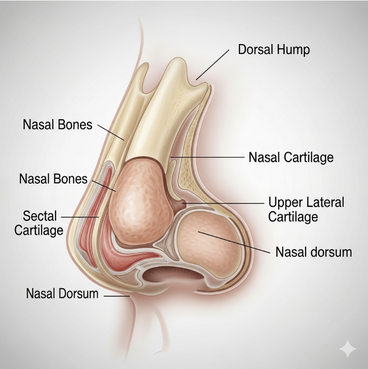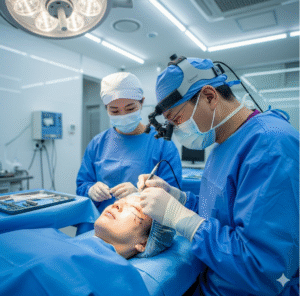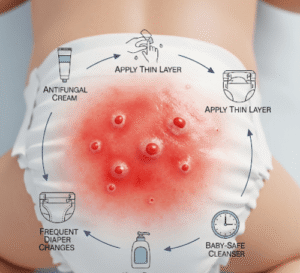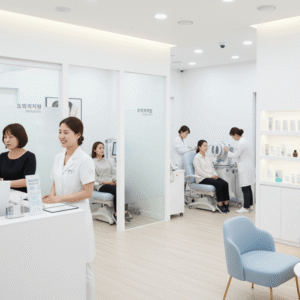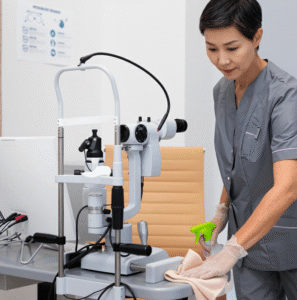What It Is
Dorsal hump reduction is a type of rhinoplasty procedure that removes or reshapes the bony and cartilaginous prominence on the nasal bridge (the “hump” on the nose). A dorsal hump can be caused by genetics, trauma, or developmental factors, and often makes the nose look larger, hooked, or less balanced with other facial features.
In Korea, dorsal hump reduction is performed with precise surgical techniques, advanced imaging, and 3D planning to create a smoother, more harmonious nasal profile while maintaining natural breathing function.
Why It’s Done
Patients undergo dorsal hump reduction because:
- They want to improve facial harmony and balance.
- The hump makes the nose appear crooked, large, or harsh.
- They want a straighter, smoother nasal bridge.
- In some cases, trauma-related humps may affect both appearance and nasal breathing.
Good candidates include:
- Individuals with prominent nasal humps affecting confidence or appearance.
- Patients in good general health with realistic expectations.
- Those seeking either subtle refinement or major reshaping of the nose.
Alternatives
- Non-surgical rhinoplasty (filler injections): Can camouflage a mild hump by straightening the profile, but does not reduce the hump.
- No treatment: Suitable if the hump is minor and does not cause aesthetic or functional concerns.
Preparation
Before dorsal hump reduction in Korea, patients will:
- Undergo consultation with nasal analysis and 3D imaging.
- Review medical history, breathing issues, and aesthetic goals.
- Stop smoking and alcohol 2–4 weeks before surgery.
- Avoid blood-thinning medications and supplements.
How It’s Done
- Anesthesia: General anesthesia or local with sedation.
- Incision: Either closed rhinoplasty (inside nostrils, no external scar) or open rhinoplasty (small incision at columella).
- Reshaping: Excess bone and cartilage forming the hump are carefully shaved, cut, or reshaped.
- Refinement: The nasal bridge is smoothed and aligned; grafts may be used for contouring.
- Closure: Sutures are placed, and a nasal splint is applied for support.
- Duration: 2–3 hours.
Recovery
- First week: Swelling, bruising, and nasal congestion are common; splint removed after 7–10 days.
- Return to activities: Light duties in 1–2 weeks; strenuous activity avoided for 4–6 weeks.
- Final results: Nose shape refines over 3–6 months as swelling subsides.
Possible Complications
- Asymmetry or irregular contour.
- Persistent swelling or prolonged healing.
- Breathing difficulties if nasal structure is not properly supported.
- Visible scarring (rare with closed technique).
- Rare risks: infection, bleeding, or need for revision surgery.
Treatment Options in Korea
Diagnosis
Korean surgeons use 3D CT scans, digital imaging, and nasal airflow tests to assess dorsal hump structure and plan correction.
Medical Treatments
- Non-surgical rhinoplasty with dermal fillers for mild humps.
Surgical or Advanced Therapies
- Closed rhinoplasty dorsal hump reduction for minimal scarring.
- Open rhinoplasty with hump reduction and contouring for complex cases.
- Combination with tip plasty or spreader grafts for balanced results.
- Revision rhinoplasty if previous surgery left irregularities.
Rehabilitation and Support
- Cold compresses to reduce swelling.
- Nasal splints for 1–2 weeks.
- Scar and skin care (minimal with closed techniques).
- International patients benefit from Korea’s advanced rhinoplasty expertise, precision contouring techniques, and natural aesthetic approach.

